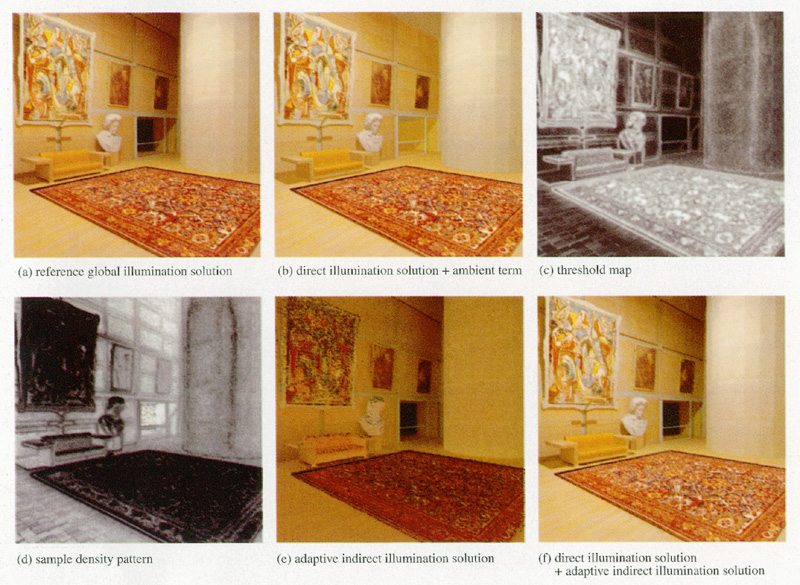|
|
[RPG99]
Cornell University Program of Computer Graphics |
|
||||
A perceptually based physical error metric for realistic image synthesis.Mahesh Ramasubramanian, Sumanta N. Pattanaik, and Donald P. Greenberg.In Alyn Rockwood, editor, SIGGRAPH 99 Conference Proceedings, Annual Conference Series, pages 73--82. ACM SIGGRAPH, Addison Wesley, Aug 1999. We introduce a new concept for accelerating realistic image synthesis algorithms. At the core of this procedure is a novel physical error metric that correctly predicts the perceptual threshold for detecting artifacts in scene features. Built into this metric is a computational model of the human visual system's loss of sensitivity at high background illumination levels, high spatial frequencies, and high contrast levels (visual masking). An important feature of our model is that it handles the luminance-dependent processing and spatially-dependent processing independently. This allows us to precompute the expensive spatially-dependent component, making our model extremely efficient. We illustrate the utility of our procedure with global illumination algorithms used for realistic image synthesis. The expense of global illumination computations is many orders of magnitude higher than the expense of direct illumination computations and can greatly benefit by applying our perceptually based technique. Results show our method preserves visual quality while achieving significant computational gains in areas of images with high frequency texture patterns, geometric details, and lighting variations.
This paper is available as a PDF file RPG99.pdf (2.5M).
| ||||||
| ||||||
